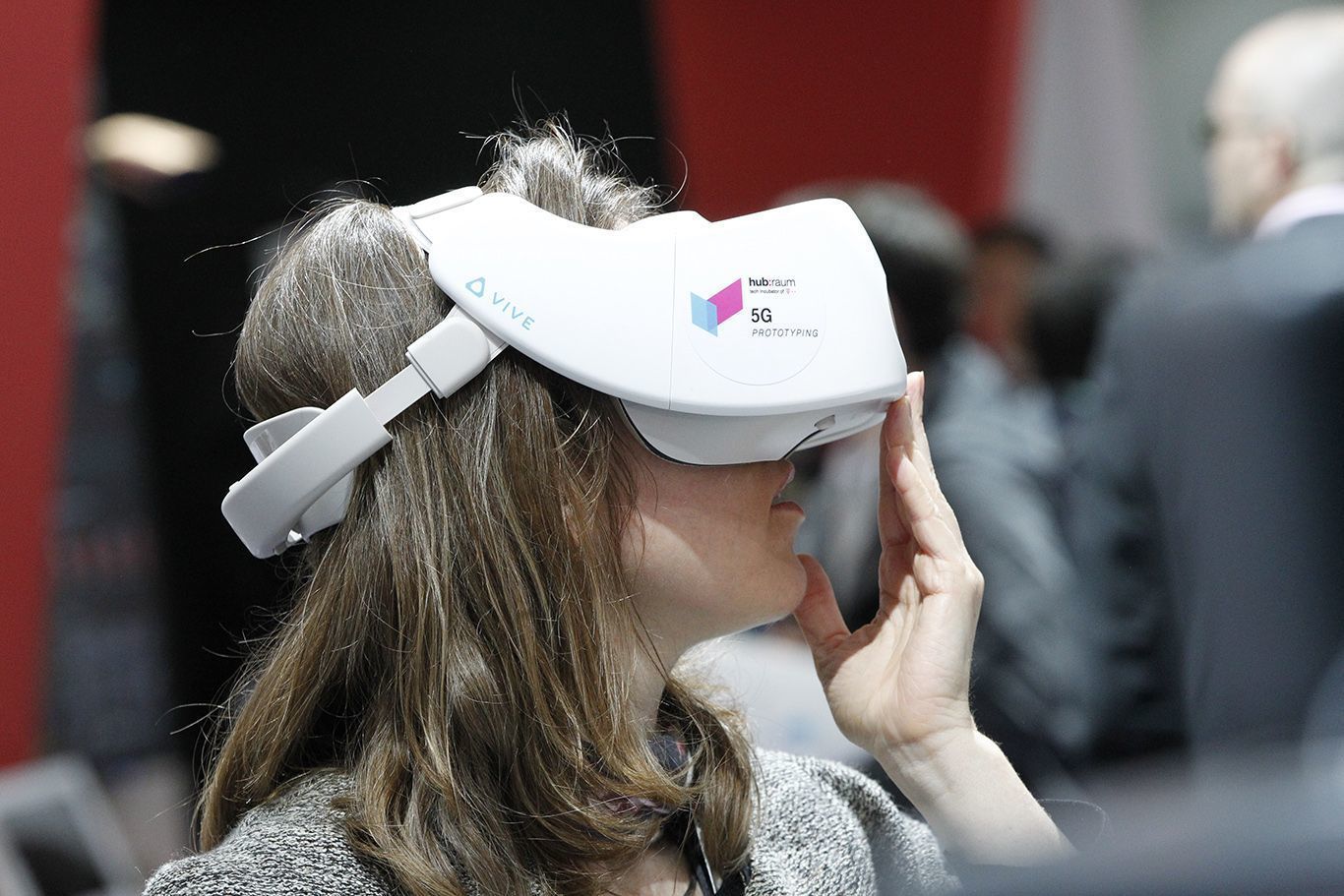The crop of smartphones unveiled at Mobile World Congress (MWC) 2019 in Barcelona was the most interesting the tradeshow has seen in years. While last year focused on notches versus teardrops and double camera setups, this time around there were new form factors aplenty, fresh approaches to mobile photography and plenty of talk of 5G. These are the trends that emerged and are likely to keep popping up in devices for the rest of the year.
Behold the fold
Technically speaking, Samsung revealed its Galaxy Fold 2-in-1 phone and tablet at its own Unpacked Event a few days before MWC kicked off, but thanks to Huawei debuting its own folding device – the Mate X – at the event, talk of both was inevitable.
Like Huawei, Samsung’s folder was generally closeted away in display cases, but that didn’t stop both foldables from grabbing headlines. The companies have taken different approaches to creating a convertible phone. Samsung’s Fold closes its 7.3in tablet display in on itself, with a secondary, 4.6in display on the outside of the phone for the things that don’t require that much resolution or screen real estate.
Huawei’s Mate X, meanwhile, folds back on itself, so its 8in display does double duty as a pair of smaller, phone-like displays when the device is folded. That also means Huawei’s stuck with three cameras on one plane, rather than the six Samsung’s distributed all over the Fold.
Both folding phones will be coming to South Africa later this year, with pricing expected to start around double that of a current flagship phone. In other words, they’re going to be pricey. But they’re also going to be unique. For a little while at least. Expect to see plenty of other manufacturers making their own pass at origami phones as the year wears on.
Going tall, going broad
While its rivals were fixating on folding phones, Sony opted to show off tall phones instead. The forthcoming Xperia 1, 10 and 10 Plus handsets all have 21:9 aspect ratio displays, with the pack-leading Xpera 1 boasting a 4K OLED panel to boot. Clearly Sony wants us watching cinema-grade (and dimension) video on the run. What will it do to the battery life of the Japanese company’s new phones? We’ll have to try them and find out.
And speaking of batteries, you know how there’s always that person in your office or at a braai who says they wish companies would “just make smartphones thicker so the battery lasts more than the day”? Please show them the Energizer Power Max P18K Pop. It’s an Android smartphone with a humungous 18,000mAh battery. Though, really, it looks like a battery booster pack that just happens to have a screen on the front and cameras on the back.
Lights, cameras, more cameras
In recent years we’ve seen the rear camera-count of most flagship smartphones slowly and steadily climb. Initially it was a pair, usually a wide angle with a telephoto lens (unless you were LG, which first went for an ultra-wide angle second shooter in the G5), then Huawei made three cameras the norm, Samsung popped four on an A-series phone, and now Nokia’s gone and stuck five snappers on the back of its Nokia 9 PureView.
It’s only fair to warn you, though, that if you’re expecting the new Nokia to do everything from super close-up, macro shots to extremely tightly zoomed ones with that quintet of rear cameras, you’re in for a surprise. All five are 12MP sensors with a regular field of view, two colour and three monochromes. Why would you want that? Image quality and the ability to adjust the focus point and degree of background blur after the fact, that’s why. Expect big files and great creative flexibility with them.
If you want a wider range of focal lengths from your pocket shooter, though, you might well get it soon. Chinese phone maker Oppo used MWC to show off a smartphone with 10x optical zoom, and rumour has it, Huawei might be expanding the reach of its own P- and Mate-series cameras in its 2019 flagships.
One-touch assistance
Another MWC 2019 trend was the emergence of the dedicated Google Assistant button. LG, Nokia and Xiaomi all unveiled smartphones with a piece of their hardware dedicated to calling up Google’s voice-powered digital assistant. Considering most smartphones only have two or three physical buttons, that’s both a serious commitment and an enthusiastic endorsement. Clearly, phone makers believe virtual assistants are here to stay.
Similarly, Samsung’s new S10 devices have a dedicated Bixby button (like the S9 and S8 ranges before them), but this time around thanks to a recent update you can now set said button to open another app with a single press instead. You can’t, however, stop a double press from opening Bixby, and you can’t set the button to open a different virtual assistant. Still, it feels like progress nonetheless.
Time will tell whether the dedicated buttons of the smartphone class of 2019 will be able to be reprogrammed, but we suspect part of getting Google on board required the same exclusivity Samsung enjoy so its devices.
Counting to five
This isn’t the first year that MWC has been awash with 5G branding and banter – it’s been a feature for the last couple of years – but this is the first year it’s actually been more than pie-in-the-sky posturing.
Ready or not, 5G is coming, and with it, a new generation of smartphones and other connected devices. Every big-name Android phone maker showed off a 5G phone, or mentioned having one on the roadmap. Maybe next year there’ll actually be the network infrastructure to support them in the real world and not just in conference halls.
Do you need to worry about 5G? Of course not. When Vodacom begins offering 5G commercial services you can bet it’ll also have a range of cutting-edge, 5G capable hardware on offer to take advantage of it. All you need to know is that it’s seriously fast, and it’ll be here before you know it.



